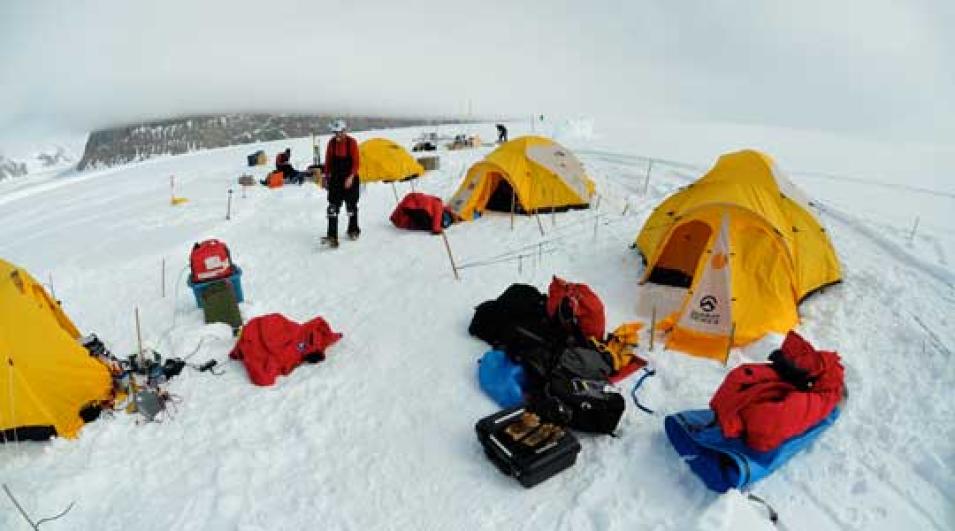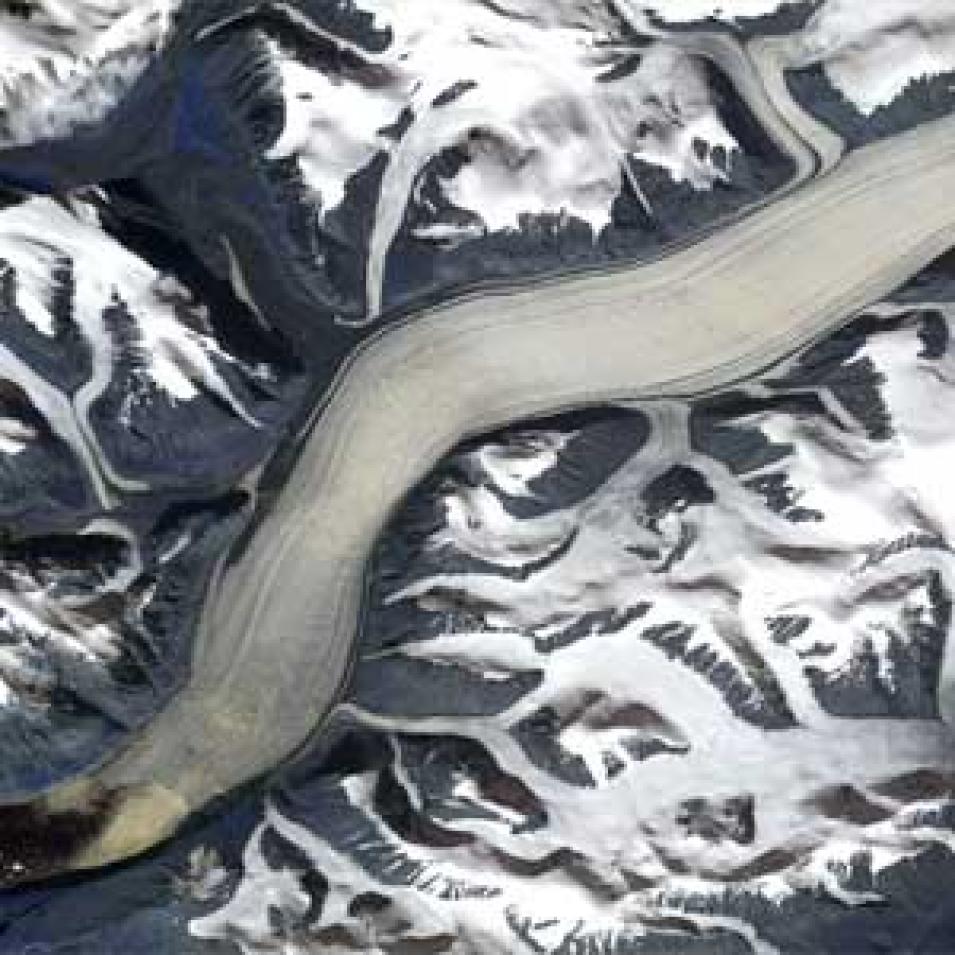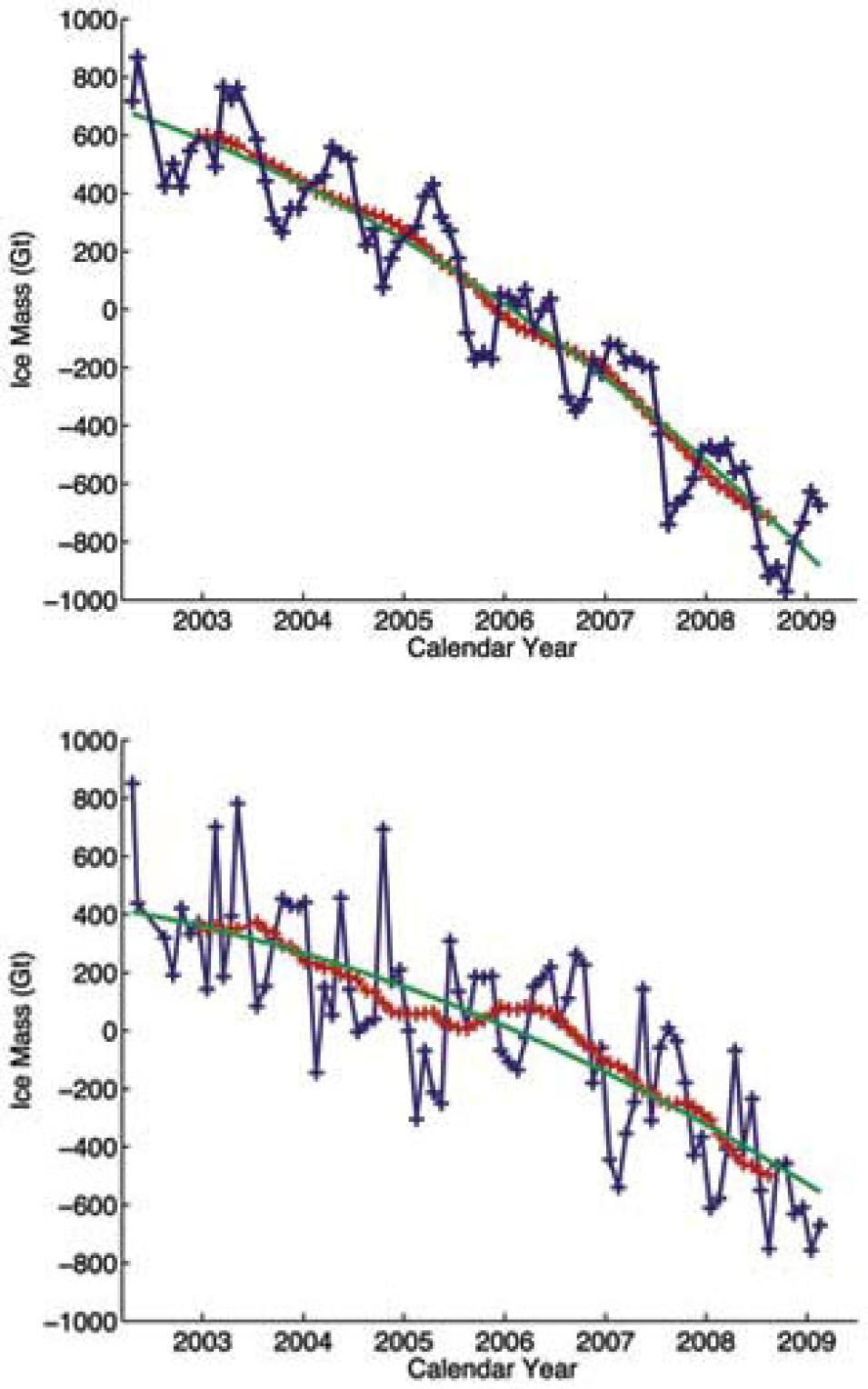A quicker picture
Seeking more data on the changes, Velicogna and others turned to a very different source. “The Gravity Recovery and Climate Experiment (GRACE) satellites weigh the Earth every thirty days and look at how the mass is changing,” Velicogna said. “We can see many things, like water storage on land, and how much ice is stored on the ice sheets. You can see the changes in mass month to month.”
GRACE, a joint mission of NASA and the German Space Agency, does not actually weigh the Earth; it measures Earth’s gravity. Gravity varies with changes in mass: it varies slightly with latitude and elevation, and with geology, like denser rocks or mountains. The twin GRACE satellites orbit in tandem, measuring micrometers of change in the distance between them, caused by small deviations in gravity.
Changes in the location of water or ice on the Earth surface also cause gravity variations. GRACE picks up the gravity signal of the ice sheets, and scientists can measure how the signal changes as the sheets change. In 2009, Velicogna isolated the gravity data for Greenland and Antarctica, turning the data into mass change measurements. She compared mass from month to month and year to year since the satellites launched in 2002. Now she had data on how it changed—and mass change could be converted directly into water volume.
Though scientists suspected that the ice sheets were losing ground, the rate surprised them. According to the GRACE data, Greenland had been losing mass at a rate of 137 billion tons, or gigatons, per year, during 2002 to 2003. (A gigaton equals the weight of about 142 million African elephants.) By 2007 to 2009, the loss had accelerated to 286 gigatons per year. More startling was that Antarctica’s mass loss also sped up dramatically, from 104 gigatons per year to 246 gigatons per year.
The GRACE data may help the rate of scientists’ understanding match the accelerating rate of ice sheet change. Velicogna said, “We really need a longer record. We have made incredible improvements over the last decade in our understanding of Antarctic mass balance. Before GRACE, we thought that Antarctica would gain mass.” Warmer air temperatures cause more snow to fall on the interior of Antarctica, helping it gain mass. Scambos said, “Isabella’s study using the GRACE data, and other studies, show that increased snowfall is not enough to offset the loss at the coasts.”
Scientists are still working to zero in on the rate of change likely over coming decades. However jagged the line of descent may be, it is pointed downward. Scambos said, “When her study came out, and we saw the trend, it was a bad surprise. It will not go down this road slowly—it will pick up speed. It is not going away.”
Future coastlines
How sea level change will change our coasts is no straight-line problem either. The ocean is not like a flat pan of water that rises equally when water is added. Velicogna said, “If you take a boat and sail the ocean, take your GPS and measure elevation, you see that the ocean is not flat. Gravitational pull shapes the sea surface. If you put more water in the ocean, it will go to the lowest point. So in some places, sea level will rise more than others. In addition there are waves and tides.” Millions of people around the world live in low-lying deltas that scientists think will be under water in coming decades.



